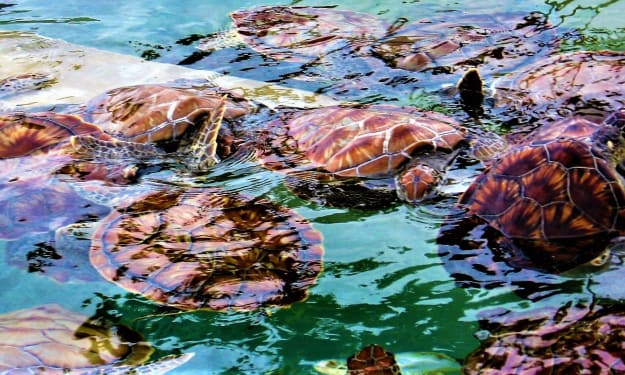A Common Loon In Late-April
An Early Spring Photograph Of A Year Round Stunner

This shot of a Common Loon (Great Northern Loon) was snapped on April 22nd 2018 around 8 AM, shortly after this loon migrated back for breeding season. Shot on a Sony DSC-H400, free hand, the photo has not been touched up or had any filters applied or lighting adjusted, just cropped to show the loon in more detail. The loon is lit by the morning sun, no flash used, and is resting on the surface of Lake Champlain after recently returning from what appeared to be an unsuccessful dive. Upon a successful dive, loons can typically be seen eating their catch, this photo was taken seconds after the loon returned to the surface without a fish, just after the ripples from its dive dissipated and it began to resume swimming.
Looking at the photo, the loon appears dry, as its feathers are highly water repellant and shed water almost instantly, it is hard to tell this loon was just under water. A droplet of water can be seen on the loon's bill, one of the few signs that it just returned from a dive. Loons, the Common Loon especially, are highly adapted to living on water, so much so that they are noted to not be able to truly walk on land since their feet are so highly specialized for swimming and the Common Loon can rarely be observed on land other than while incubating their eggs/ hatchlings. The Common Loon spends the vast majority of its life floating on the surface of lakes, rivers, ponds, other reservoirs and ocean waters and are most commonly observed resting on water or returning/ entering a dive. Loons will often sleep on water, typically taking short naps, tucking their heads back into their plumage.
As someone who enjoys photographing and observing birds year round, this photograph screams spring to me for a number of subtle reasons. An interesting seasonal affect that is common to most loon species can be noted from this mid-April photograph. Many people who are used to seeing loons in summer months will recall them having almost eerie bright red eyes that can seem to glow in the sunlight. Loons' eyes become bright red in their early breeding season and remain red throughout the summer and early fall months. During the winter season, loons' eyes are more a muted grey/ reddish brown. In this photo taken in early spring, just as the loon is moving back to its northern summer home, its eyes can be noted as grey/ reddish brown, potentially with the very start of pigmentation shifting towards its summer bright red being observable.
While the eyes of this loon still appear to display a presentation that is more associated with winter months, its plumage already tells the story of the upcoming breeding season. The stunning black and white checkers and glossy black bill of the Common Loon are only present during the breeding season. In the fall, loons molt, while continuing to present with a redder eye, shifting from the black and white checker pattern to a more muted grey with some patterning around the neck and with white breast, belly, and underwings, while taking on a more grey bill for the winter months. Toward the end of the winter, loon plumage can be observed shifting to its breeding season presentation. Since this photo shows the breeding plumage with an eye that is not yet red, it shows a presentation of the loon that is quite short lived but very attractive to the eye. To me, it very much speaks to the promise of an upcoming summer and a fading winter by displaying two separate seasonal color shifts that are out of phase with each other.
Common Loons spend their breeding months (late April to October) in northern states in the US, such as Vermont, New Hampshire, Maine, Washington, Alaska, Idaho, Montana, North Dakota, Minnesota, Wisconsin, Michigan, and New York, and throughout most of Canada, as far north as the artic circle (displaying their breeding plumage and eventually molting at the end of the season). The Common Loon will typically winter and be seen in more southern coastal areas of the Pacific and Atlantic Oceans and Gulf of Mexico (presenting in their grey plumage with their less red, more reddish brown and grey, eyes). They do also over winter in some inland reservoirs in more southern US states, offering birders and photographers in many areas throughout the US, and all provinces in Canada, the opportunity to observe this gorgeous species in one of its seasonal presentations.
About the Creator
Michael Hanson-Metayer
A restless soul, typically caught in between 2 divergent things. Sometimes freelance writer, occasional photographer, wide eyed observer of humanity, often a chronicler of recent and contemporary events, and frequent storyteller.






Comments
There are no comments for this story
Be the first to respond and start the conversation.